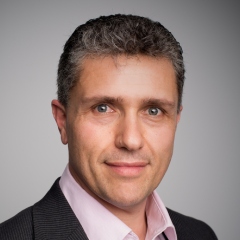
Two years into the COVID-19 pandemic, we are living in a world still interrupted by uncertainty, causing many to rethink their relationship between work and health. Many of the stories we see in the media during the pandemic are about the dangers of overwork, but what about those who want – or need – to work, but can’t?
Loss of work due to injury or illness can be devastating for the individual, the family, and the community. Research by the Royal Australasian College of Physicians (RACP) shows compelling evidence that good work is beneficial to people’s health and wellbeing and that long term work absence, work disability and unemployment have a negative impact on health and wellbeing.
Life insurers will offer rehabilitation and coaching programs to help get people back to work, but as the road to recovery can vary drastically from person to person, how can insurers ensure the best outcomes from such a nuanced process?
The benefits of going back to work
First, we start at the beginning – why is returning to work so important? Though constantly evolving, the most profound benefit is mental health, as work is known to provide purpose and social interaction, translating into physical benefits. Reviews by the RACP and the Australasian Faculty of Occupational & Environmental Medicine (AFOEM) found that employment was a significant protective factor in people becoming resilient and in helping prevent future illness, as it enables us to handle problems or recover more easily. It also helps us take charge of our health more proactively, building into a positive cycle.
Researchers, medical practitioners, and insurers also talk about a return to good work, not just any work. For some, returning to the job they had before injury or illness is not an option. In that case, returning to work that is the right environment, gives a person purpose and fulfills them is what we define as good work. Putting someone in an unfulfilling job will not only not help, but it may also make things worse. Return to good work has an overall positive impact on our wellbeing, with improvements in mental health and also reductions in rates of suicide indicated.
No one-size-fits-all approach to recovery
Next, we look at the recovery plan or rehabilitation process which helps people get back to good work after injury or illness. There is no ‘typical’ process as even two people with the same illness may experience different roads to recovery, so each case has to be assessed on its own. We look at whether the case even needs rehab and how it can apply, then tailor it to the individual’s needs and circumstances.
At times, we recommend ‘prehabilitation’, designed for those who worry that time off will hinder their career. This involves working with the employer to ensure that when the individual eventually returns to work, there is not a massive gap to overcome. It’s important to note that this is not always necessary and will depend on an individual’s circumstances. Some people cannot afford to not work – self-employed doctors or dentists, for example, who run their own practices may lose patients to competitors if unable to work.
Early intervention is the strongest indicator of being able to return to work, since the longer someone spends away from work, the less likely it is that they will ever return. At the same time, rehab cannot be rushed – forcing someone back to work too early can make things worse, so it’s vital to tailor things to the individual’s condition and strike a balance between not rushing them and catching things early enough.
Overcoming barriers
Finally, a good recovery plan will be able to overcome some of the common barriers impacting return to work. The biggest roadblock is often the condition itself, where low energy or a physical injury prevents people from getting back on their feet. There is also a social aspect where, if there is a toxic work environment, people can naturally be hesitant to return. Other barriers include financial pressures or a lack of family support. It is the job of the insurer and rehab specialist to work with the individual in these cases to help identify the issues and intercede with employers where necessary.
A good recovery plan is also a collective effort – designed in conjunction with allied health services, medical professionals, and rehab specialists, but most importantly, led by the individual. The main aim is to empower people to take charge of their wellness and rehab, not to force a program on them. Doing so may cause them to relapse, and reinforce the thought that work is bad. Having a tailored recovery plan that gets people back to work at a time that works for them is beneficial not only to the individual but to all those involved as well.
At times, the recovery process means having confronting situations with people, especially when they define themselves by their role and are unable to cope with disability and the loss of that role. It’s our job – to me, an obligation – to help ensure a happy outcome even if someone can never go back to work. It’s our job to let them know transitioning to another form of good work can be just as fulfilling. In today’s uncertain world, it can feel overwhelming to think about things not in our control. With the support of a good life insurer however, it can be a little more manageable.
Marcello Bertasso, head of underwriting and claims management, PPS Mutual

Neil is the Deputy Editor of the wealth titles, including ifa and InvestorDaily.
Neil is also the host of the ifa show podcast.
Never miss the stories that impact the industry.